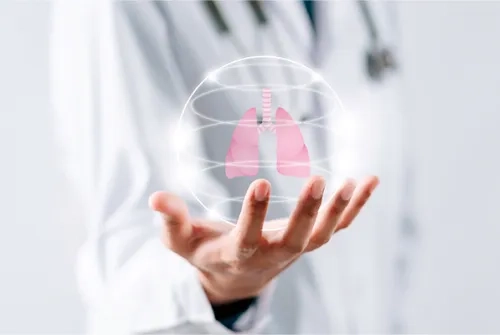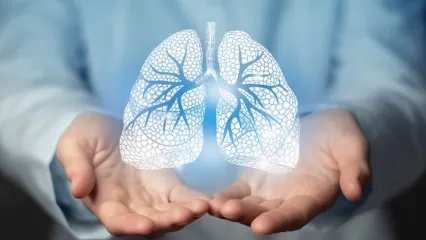Alo Yeditepe
Alo Yeditepe
What is Tuberculosis (TB)? Symptoms and Treatment
What is Tuberculosis (TB)?
Tuberculosis is an infectious disease caused by the bacterium Mycobacterium tuberculosis. Since it is inhaled, it primarily affects the lungs, but it can also affect other organs as the bacteria spreads to the body through the blood.
How Is Tuberculosis Transmitted?
It is transmitted by people who are in close contact with the sick person and inhale the bacteria-laden droplets that spread into the environment when people with tuberculosis cough, sneeze or talk. The most contagious tuberculosis patients are those with laryngeal and pulmonary tuberculosis. Patients with lymph, liver, spleen, bone, peritoneum and ovarian tuberculosis are not expected to be contagious if they do not have active disease in their lungs.
It is possible to list the factors that increase the risk of transmitting tuberculosis as follows:
Close contact: Being in close contact with a person who has active tuberculosis for a long time increases the risk of transmission of tuberculosis bacteria.
Weak immune system: People with weak immune systems, especially those with HIV infection, cancer patients, diabetic patients, rheumatology patients who need to use immunosuppressive drugs or cortisone, are more susceptible to tuberculosis and can spread the disease more quickly.
Crowding and poor hygiene: Crowded and unhygienic environments increase the risk of spreading tuberculosis. Sharing the same environment that is poorly ventilated and does not receive good light, especially with people who have active tuberculosis, greatly increases the risk of infection.
Inadequate Treatment : Untreated tuberculosis cases lead to further spread of bacteria and especially to the development of drug-resistant tuberculosis.
Therefore, to prevent tuberculosis, it is important to take hygienic measures, limit close contact with sick people, and diagnose patients early and start treatment immediately.
What are the Symptoms of Tuberculosis?
Symptoms of tuberculosis can often vary depending on the area affected by the disease. Since the bacteria is inhaled, it first settles in the lungs and from there spreads to other organs through the blood.
The main symptoms observed in a patient with tuberculosis:
Long-Term Cough: Cough lasting longer than two to three weeks is the most common symptom.
Bloody Sputum: Bloody sputum during or after coughing may be a sign of advanced tuberculosis.
Weakness and Fatigue: General weakness, fatigue, and loss of energy are common symptoms of tuberculosis.
Loss of appetite and weight loss: It is a common symptom.
Fever: Low-grade fever, which usually persists for 3-4 weeks, may be a symptom accompanying tuberculosis.
Night Sweats: Intense night sweats are one of the general symptoms seen especially with loss of appetite and weight loss.
Chest Pain: It occurs especially as a result of fluid accumulation in pleural tuberculosis.
Shortness of Breath: It occurs when the disease is widespread in both lungs or as a result of large amounts of fluid accumulation in the pleural tuberculosis.
Belong To Other Organ Tuberculosis: We may also encounter symptoms related to other organs, such as pain in the bones in bone tuberculosis, bloody urine in bladder tuberculosis, abdominal pain and abdominal swelling in peritoneal tuberculosis, and signs of meningitis if it is located in the meninges.
Who is at Risk of Tuberculosis?
There are many groups at risk for tuberculosis (TB). These risk factors increase a person's likelihood of getting tuberculosis and also lead to a more serious course of the disease.
It is possible to list the groups at risk for tuberculosis as follows:
Those with a Weak Immune System: Conditions that weaken the immune system, such as HIV (AIDS), may increase the risk of tuberculosis. People with weakened immune systems are more vulnerable to TB, and when infected, the disease can lead to more serious consequences.
Elderly People: Elderly people become more susceptible to tuberculosis as comorbidities such as diabetes increase with age.
Children: Like the elderlies, children whose immune systems are not fully developed may also be more susceptible to tuberculosis.
Poverty and Crowded Living Conditions: This situation constitutes an important risk factor for people who live in poverty due to economic reasons and therefore are malnourished, have to live in poor hygiene conditions, and have to live together in crowded houses that do not receive enough sunlight. These conditions facilitate both the occurrence and spread of the disease.
Workers in Disease-Related Areas: Healthcare workers are at risk because they are in direct contact with patients with tuberculosis.
Those who have had tuberculosis in the past: The disease may reoccur in patients with a history of tuberculosis, especially in patients who have not completed their treatment or received incomplete treatment.
These risk factors suggest that individuals may be at a higher risk for tuberculosis infection and disease. Therefore, it is important to regularly screen these at-risk groups for tuberculosis and take preventive measures.
How to Treat Tuberculosis?
Tuberculosis treatment involves a long-term drug regimen, usually consisting of antibiotics. The treatment process can often take 6 to 9 months or longer and is important to complete. Drug treatment may vary depending on the type of disease, the patient's age, weight, drug sensitivity of tuberculosis and other medical conditions. Completing the recommended medication regimen is crucial to ensuring the success of treatment and preventing the recurrence of tuberculosis.
When treatment is completed, the patient undergoes tests that show that the treatment was successful. Even after treatment is completed, sometimes symptoms can persist or reoccur, so it is very important that people with tuberculosis are monitored regularly.
What Should Be Done to Protect from Tuberculosis?
Getting Vaccinated: Bacillus Calmette-Guérin (BCG) vaccine is a vaccine used to prevent the serious consequences of tuberculosis. It is routinely applied to children, especially in areas at risk. However, BCG vaccination does not completely prevent tuberculosis infection, it only reduces serious consequences. This vaccine is also applied in our country and is included in the routine vaccination calendar.
Adopting a Healthy Lifestyle: Healthy lifestyle habits such as a balanced diet, regular exercise, avoiding alcohol and cigarettes, getting enough sleep and avoiding stress strengthen the immune system and help protect against infections.
Taking Hygiene Precautions: Washing hands regularly, especially after coughing or sneezing, is important in protecting against infectious diseases such as tuberculosis. It is also important to avoid prolonged and close contact with people with tuberculosis.
Follow-up th People who are at Risk: People who are especially at high risk, such as HIV-positive people or people who have been in contact with tuberculosis, should be screened for tuberculosis regularly and preventive measures should be taken when necessary.
Protective Equipment for Workers in Isolated Areas: People who have direct contact with tuberculosis, such as healthcare workers, should protect themselves from infection by using protective equipment.
Treatment of Tuberculosis: Early diagnosis and effective treatment of people with tuberculosis prevents the spread of the disease and reduces the risk of infection in the community.
Frequently Asked Questions About Tuberculosis
Tüberküloz (Verem) Nedir?
About
Faculty and Year of Graduation:
İstanbul University, Çapa Faculty of Medicine, 1984
”
See Also
- Circadian Rhythm Disorder
- What is Good for Cough? How to Cure Cough?
- What Should Asthma Patients Be Cautious About?
- Does Poor Quality Sleep Increase The Risk of Asthma?
- What is Allergy? What are Allergy Symptoms?
- COPD Makes You Age Early
- It Is Aimed to Eliminate Tuberculosis Worldwide By 2030
- Pollen is Now Seen Outside of Seasonal Changes
- Do Dental Caries Increase the Risk of Pneumonia?
- Smoking Rates Under the Age of 15 Are Increasing
- Inhaling Electronic Cigarettes for a Few Minutes Causes Damage to Vein Wall
- People Who Smoke More Than 25 Cigarettes a Day Have a 50-fold Increased Risk of Lung Cancer
- Can Back Pain Be A Sign of Lung Cancer?
- Nine Out of Ten COPD Patients Do Not Know They Are Sick
- Quitting Smoking Even After Diagnosing Lung Cancer Effects Lifespan
- Electronic Cigarettes Can Cause Heart Attacks!
- Pollen Allergy Has No Season
- Beware of Little-Known Risks of Smoking!
- Lung Cancer
- Does the Pneumonia Vaccine Protect Against the Coronavirus?
- In Case You Are Unable To Sleep Even If You Are Tired, Your Circadian Rhythm May Be Disrupted
Alo Yeditepe




